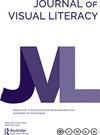Exploring meaning-making practices via co-speech gestures in TED Talks
Q1 Arts and Humanities
引用次数: 5
Abstract
Abstract The TED talk (www.ted.com) is a hybrid popularizing genre empowered by contemporary digital technologies in which different semiotic modes feature prominently and which is being extensively used in educational settings. This study is based on and further develops research on co-speech gestures in a selection of such talks from various knowledge domains, so as to shed light and raise awareness on the orchestration of different modal resources therein and as a way of contributing to the development of multimodal literacy in an ever changing educational landscape. Data description is based on multimodal transcription through an integrated method, which makes it possible to advance hypotheses about the interpretation of gestures in different contexts. The qualitative analysis will show various ways in which speech-synchronized gestures in the talks can contribute different (also simultaneous) ideational, interpersonal and textual meanings or metafunctions, especially when considered from a more global analytical perspective, viz. as repeated similar patterns over discourse chunks. Reference will also be made to Multimodal Critical Discourse Analysis as an overarching framework, as some of the patterns appear to have the potential not only to enhance cohesion but also to subtly emphasize emotional and value-laden meanings, thus pushing the highly persuasive discourse of this genre of talks forward.探索通过TED演讲中的共同语言手势来实现意义的实践
摘要TED演讲(www.TED.com)是一种由当代数字技术推动的混合普及类型,不同的符号模式在其中占据突出地位,并在教育环境中广泛使用。这项研究基于并进一步发展了对来自不同知识领域的共同言语手势的研究,以阐明并提高人们对其中不同模态资源的协调的认识,并作为在不断变化的教育环境中促进多模态识字发展的一种方式。数据描述是通过一种集成的方法基于多模式转录的,这使得在不同的上下文中提出关于手势解释的假设成为可能。定性分析将显示谈话中言语同步手势可以以各种方式贡献不同(同时)的概念、人际和文本意义或元功能,特别是从更全局的分析角度来看,即在语块上重复相似的模式。还将参考多模式批判性话语分析作为一个总体框架,因为其中一些模式似乎不仅有可能增强凝聚力,而且有可能微妙地强调情感和价值意义,从而推动这类谈话中极具说服力的话语向前发展。
本文章由计算机程序翻译,如有差异,请以英文原文为准。
求助全文
约1分钟内获得全文
求助全文
来源期刊

Journal of Visual Literacy
Arts and Humanities-Visual Arts and Performing Arts
CiteScore
1.30
自引率
0.00%
发文量
12
 求助内容:
求助内容: 应助结果提醒方式:
应助结果提醒方式:


